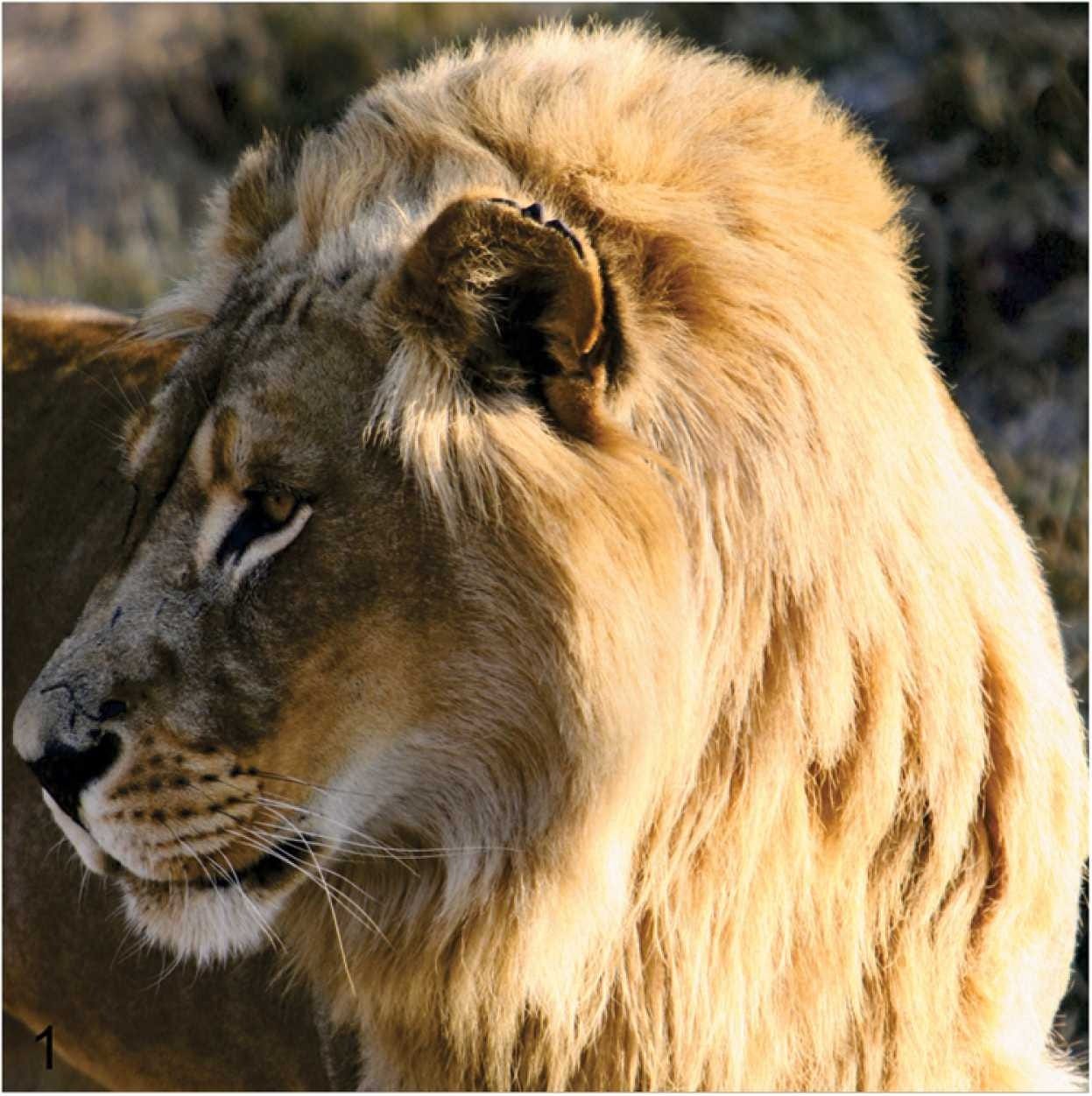
In the animal kingdom, adult males and females of a species may have differences in appearance, termed sexual dimorphism. These differences vary from species to species and can include distinctions in size, color, or structure of basic anatomy. One of the most striking sexual dimorphisms is that of adult lions, where males have a large mane which frames their head. Female lions lack a mane.
But as it turns out, things are not quite that simple. In 2016, a team of scientists described five wild female lions with manes living in the Okavango Delta in northwest Botswana. Each of the five lived in different prides, meaning that it is unlikely that mane growth was coordinated between individuals. The research team received permission for their work from the government of Botswana and the Sankuyo Tshwaragano Management Trust which oversees the land with input from local communities.
(Before continuing, I want to note that researchers assign these lions as female on the basis of their genitalia and chromosomes. Keep this in mind as you continue reading! Moving forward, I will call them “lionxes” in order to leave space for ambiguities which will hopefully become clear soon enough.)
Prior to this work, maned lionxes had been reported anecdotally, but not much else was known about them. So the researchers chose to observe their behavior. It was possible that they continued to show female-specific behaviors or that they shifted toward male-specific expressions.
Lions communicate in two major ways: roaring and depositing their scent. Roaring is more frequently performed by males, and lionxes roared more than maneless lionesses in their pride. Additionally, scent marking includes face rubbing, paw marking, urinating, and defecating. Male lions generally prefer to mark their scent through face rubs and spraying urine on their target. Lionxes also marked their scent in these ways more often compared to their maneless counterparts.
Researchers were also interested in the mating behavior of lionxes, given that these behaviors are generally sexually dimorphic. Over 8 years, researchers often observed maned lionxes mating with maned males, but they never achieved pregnancy. Moreover, two of the lionxes attempted to “mount” maneless females, a male-specific sexual behavior that was largely ignored by the maneless female.
Overall, these observations suggest that maned lionxes not only are different from maneless lionesses in appearance but also in behavior, displaying more masculine behaviors. These tendencies are not absolute, as lionxes continued to hunt and patrol with females of the pride. Yet, these distinctions are significant enough to suggest that mane growth is driven by changes in physiology. The precise source of these physiological changes remained unknown.
In 2022, another study of maned lionxes provided additional insight into this process. This second study was performed by South African researchers interested in how sex is maintained throughout an individual’s life. They motivated their study as follows:
Until recently, mammalian sex differentiation was thought to be finalized in the embryo. Development of the tubular genital tract, external genitalia, secondary sexual characteristics and sexual behavior are determined largely by the developing gonad. In the last decade, however, it has been shown that continuous sex maintenance is required throughout life.
These researchers hypothesized that lionxes actually experienced a change in sex. To test this, they examined the sex hormone levels and reproductive tissues of maned lionxes held in captivity.
Hormonally, the maned lionxes had decreased estrogens and elevated testosterone, comparable to domesticated tomcats. In examining the lionxes’ reproductive tissues, researchers noticed that most had an enlarged clitoris and ovarian cysts. Surprisingly, microscopic examinations of their ovaries showed no signs of ovarian follicles, the basic units of female reproductive biology and the precursors to mature eggs.
Instead, each of the ovaries from the lionxes contained “Sertoli-like cells.” Sertoli cells are typically found in the testis and support the formation of sperm. These Sertoli-like cells were organized in seminiferous-like tubules, similar to the seminiferous tubules found in the testis. Additional testis-like cell types (including interstitial cells and myoid cells) were also found in the ovaries of the maned lionxes.
With this data, the authors propose that the reproductive systems of lionxes underwent transdifferentiation, where their ovaries are transformed into testis-like organs. Importantly, ovaries and testes share a common tissue of origin in development, making it conceptually plausible that development could reverse itself to regenerate tissue that could become testis-like. Given that lionxes are hormonally male (i.e. low estrogens and high testosterone), the proposed transdifferentiation is likely to be driven by changes in hormone levels.1
omg! what does this mean?
I want to first note that these lionxes are not “transgender” given that gender is a product of human society. Further, we cannot ask non-human animals about their self-identification.
At most, we might say maned lionxes are “transsexual” in that their sex characteristics markedly diverge from the binary sex assigned by heteronormative researchers. Ultimately, we still do not know what kicked off the proposed sexual transdifferentiation in lionxes, but they definitely didn’t go to the gender clinic for a testosterone prescription.
In male lions, mane development is driven by a complex array of factors, and genetics is just one influence. Hormone levels, nutrition, habitat, and year-to-year temperatures are all associated with differences in mane growth and coloration. Additionally, lions are social creatures which live in hierarchical prides. It’s also possible that the social dynamics of the pride influence whether a lionx grows a mane.
Yet, the existence of maned lionxes indicates that biology and sex are incredibly plastic, even in non-human animals. Sex, a supposedly biological category, changes along with hormonal profiles. Therefore, it is not a static fact of life. Rather, it morphs with the individual and the specific experiences of their life (an evolutionary concept known as life history).
Life history analyses of sex characteristics are less common because Western scientists tend to consider sex only in the terms of species reproduction (i.e. a long-term consequence of group behavior). However, this is just an artificial construction that reflects the misogyny and queerphobia underneath traditional scientific knowledge.
In fact, this way of thinking actually limits the bounds of scientific imagination by deemphasizing the roles of an individual lionx. It explicitly encourages us to avoid interrogating the specific experience of the lionx. For example, do they serve a specific social role in the pride? Are there other physiological and neurological changes that a lionx experiences during transdifferentiation?
We don’t (yet) know the answers to these questions, but one thing is certain. Lionxes continue to exist within their prides without disrupting the hierarchies which govern the group’s social dynamics. If this was true, then researchers would have observed aggression from male lions toward lionxes. But, there are no reports of such behavior. Lionxes continue to provide for their community, just as their community continues to provide for them.









A few thoughts:
1. These "lionxes" may be intersex! The Jewish Talmud accounts for some similar developments in humans among its seven genders. See here: https://www.myjewishlearning.com/article/the-eight-genders-in-the-talmud/
2. Given what I've learned here, I would say that "pride" is an appropriate group noun for lions.
the way i've been thinking about this like.. every day since i read it. . .. obsessed